Blu-ray: UK Compilation Movies
Compiled by Martin Willey
UK, 31st January 2022. 5 Blu-ray discs, £50
There is no DVD edition (arguably discs are as obsolete as VHS tape in 2022). Spazio 1999 has only had one VHS release before. The other four movies have had multiple releases on VHS and DVD (DVD releases shown below).
Partial re-release in August 2025 as Super Space Theatre Collectors Edition Volume 2, and a full re-release in September 2025 in Australia as Super Space Theatre
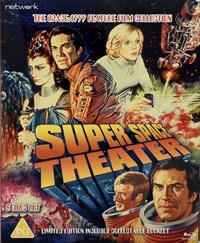
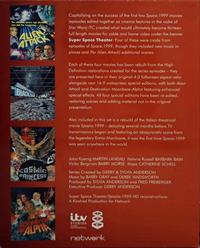
The cover art is a compilation of the Chantrell art for Alien Attack and Destination Moonbase Alpha.
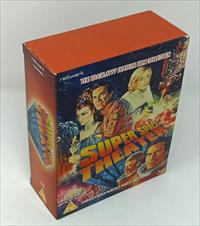
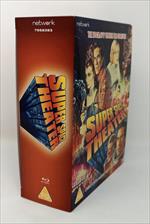
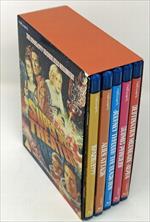
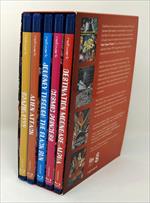
A card slipcase with 5 individual Blu-ray cases, each with individual covers, and a 24-page colour "commemorative booklet". The booklet has a 2 page introduction of David Hirsch, with promotional photos and video covers on the other pages.
The original package name used by ITC US in 1982 was "Super Space Theatre" (using the English spelling of "theatre"), although there is at least one folder with the name "Super Space Theater" (using the American spelling "theater") (see original press kits). This Blu-ray produced by a UK company in Britain in 2022 is "Super Space Theater".
Of the original 5 movies, only two were originally produced as part of Super Space Theatre (Journey Through The Black Sun, Cosmic Princess), although the two David Withers compilation films, Alien Attack and Destination Moonbase Alpha, were sold under this branding.
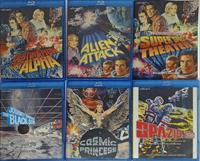
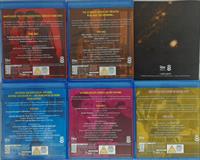
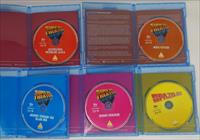
There are 5 individual Blu-ray cases, using the original promotional art. The Alien Attack disc case has additional notes by Tim Mallett on the interior.
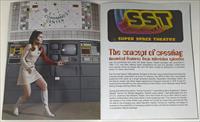
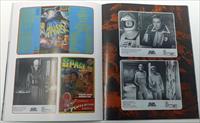
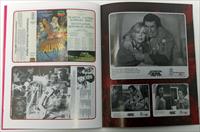
The 24 page booklet has a 2 page introduction by David Hirsch. The other pages have VHS video covers and ITC promotional images.
All 5 movies are included. Spazio: 1999 has previously only been released on VHS videotape in 1991. All the movies are recreated using the 2004 and 2014 HD episodes, released by Network in 2010 and 2015, although the 16:9 versions have never been released before.
The re-editing was by Tim Mallett of Kindred, who previously made the Space: 1999 video documentary for Fanderson, various original soundtrack CDs for Fanderson and Silva, Message From Moonbase Alpha, and the extras for the 2010 Network Blu-ray set.
Four of the films are in two formats: 4:3 (original TV format, with the original soundtrack) and 16:9 (widescreen, using an episode soundtrack). These are different edits, with different lengths, with the 4:3 version closely based on the original movie cut, while the 16:9 includes enhanced special effects scenes and different title sequences.
Two of the movies (Journey Through The Black Sun, Cosmic Princess) have the original titles in 4:3 NTSC format as extras.
The four main films have an original trailer, usually recreated in high definition (only Destination Moonbase Alpha is standard definition).
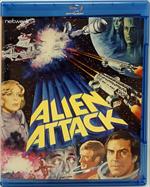
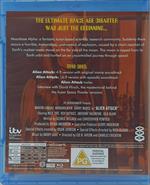
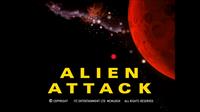
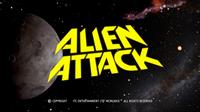
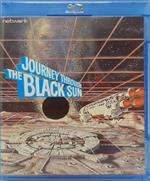
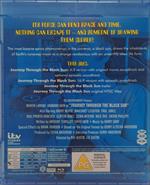
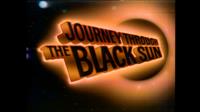
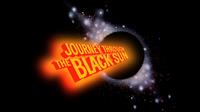
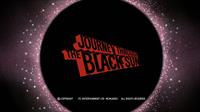
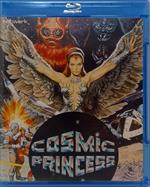
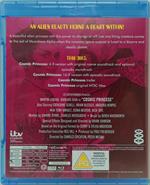
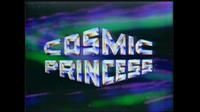
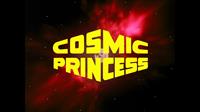
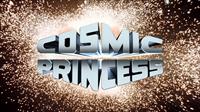
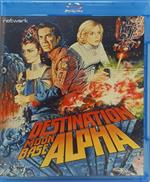
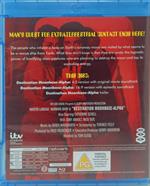
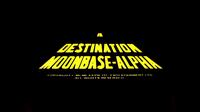
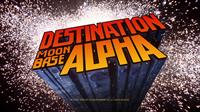
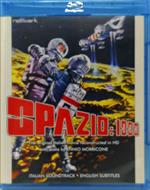
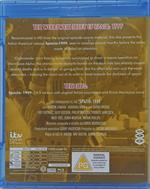
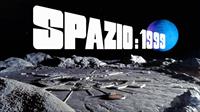
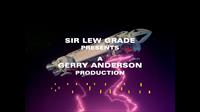
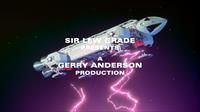
4:3 and 16:9 from the titles to Alien Attack. Both versions are similar. The 4:3 version slowly builds the text of the film title during the sequence; the 16:9 doesn't, and has a new title card. For Destination Moonbase Alpha, the 4:3 version has the original "Star Wars" scrolling text ("Far out into the galaxy of the Universe is the Moon"), but the 16:9 version drops that and cuts the narration (no more support system fed by nuclear waste from Earth, or "the year is 2100"). New clips from other episodes are added, including Force of Life and The Troubled Spirit.
The narration and clips are reused in the 16:9 Journey Through The Black Sun and Cosmic Princess opening. The 16:9 Journey Through The Black Sun titles are in the same style as Alien Attack, with the same music track ("Giants Causeway" by Nick Ingham). The 16:9 Cosmic Princess titles have the Marc Smith narration and the Mike Vickers track "Moonbase part 3" from Destination Moonbase Alpha.
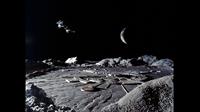
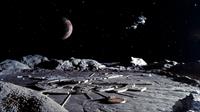
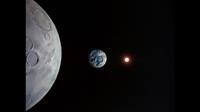
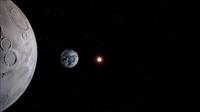
4:3 and 16:9 version, the latter with more stars. In the original film (but not the original episode), the Moonbase shot is reversed; the 16:9 version corrects it. The original effects footage only had a few stars, and no doubt Brian Johnson would have added more stars if he could. The original sparse stars are far more realistic.
Stars are very far away, and their light is very faint. In daylight you can't see stars, even if you are on the Moon. If the sun is hidden (you are on literally on the dark side of the Moon, or orbiting over the night side of Earth, or in deep interstellar space) you can see stars - but you won't see much of the lunar surface or any spaceships, which will appear as black silhouettes. Even then, cameras need long exposures to capture the dim light of stars and nebulae.
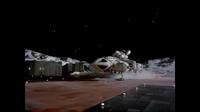
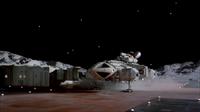
Not all the space shots have more stars. In Journey Through The Black Sun and Cosmic Princess, most shots are unaltered. Here the 16:9 shot is altered to remove the wire, but no stars are added.
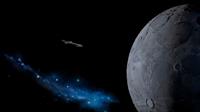
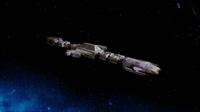
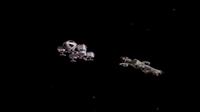
Two edited shots in the 16:9 version of Cosmic Princess, and one unedited shot. For consistency, it may have been better to keep the overall composition including the nebula, but not include most of the stars, or at least make them much fainter.
Oddly, the stars and nebula are bigger in the second image. A closer view of the ship should have exactly the same background as the distant one, unless the stars are tiny objects only kilometres away.
Another inconsistency is when Koenig tries to stop Alan and Ehrlich in the moonbuggy in Destination Moonbase Alpha. The Eagle flies in a dense starry sky, while the live action astronauts fight on the lunar surface with almost no stars.
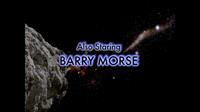
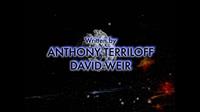
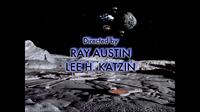
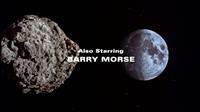
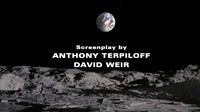
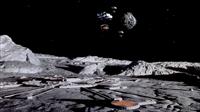
Although the 4:3 titles closely follow the original film titles, they are newly made, not refurbishing the old film. Alien Attack and Destination Moonbase Alpha look identical, but Journey Through The Black Sun and Cosmic Princess have new shots and more modern video effects for the titles. The 4:3 titles for Journey Through The Black Sun has two embarrassing typos, for the Barry Morse credit, and the Anthony Terpiloff credit (thanks Richard Cousins).
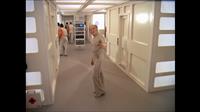
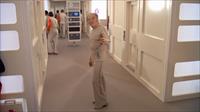
The 16:9 versions seem to use the original BBC 16:9 masters, sometimes with slightly more information on the sides (note the discarded coats of cast and crew just visible on the left). The image looks remarkably good in 16:9 framing.
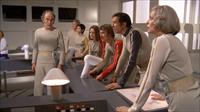
On the extreme left, a woman in a white cardigan and blue dress becomes visible in this 16:9 framing.
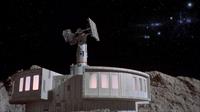
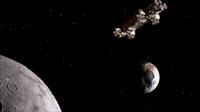
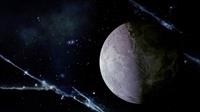
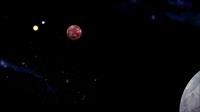
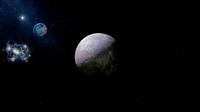
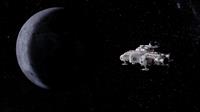
Examples of various enhanced scenes. The compositions are good, but the density of stars make them too "busy". The effects in Space: 1999 were stark and uncluttered, like the interior set design, with occasional flourishes. Individually the shots are impressive, but blanket of stars in every shot is excessive.
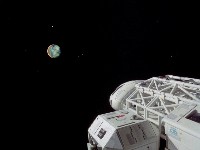
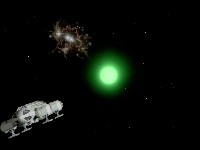
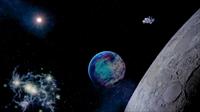
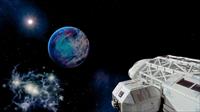
The original effects shots from The Metamorph, and modified effects shot from the 16:9 version of Cosmic Princess. The new effects put in the airbrush nebula from other shots, loads of stars, and a sun that should probably be casting darker shadows in that position.
There are a few examples where the source of light is inconsistent between elements (the original effects occasionally made this mistake too). The nebula seem to be mostly colour-altered versions of original SFX airbrush art; there is no obvious new CGI.
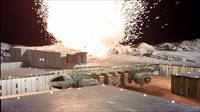
One CGI Eagle was added- this shot, replacing the cardboard cut-out Eagle that was a little too visible in the original shot.
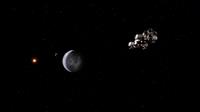
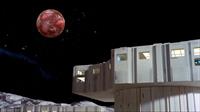
A couple of shots from Alien Attack. As Koenig's Eagle flies to the Moon, the space station is seen (nitpicking, but it shouldn't be rotating). And a shot of the Main Mission tower, with Alpha rooms and people visible in the windows (nitpicking, the interior sets and windows don't map to the exterior models at all, but this is a brave attempt).
Copyright Martin Willey;
packaging and screen images copyright Network Video